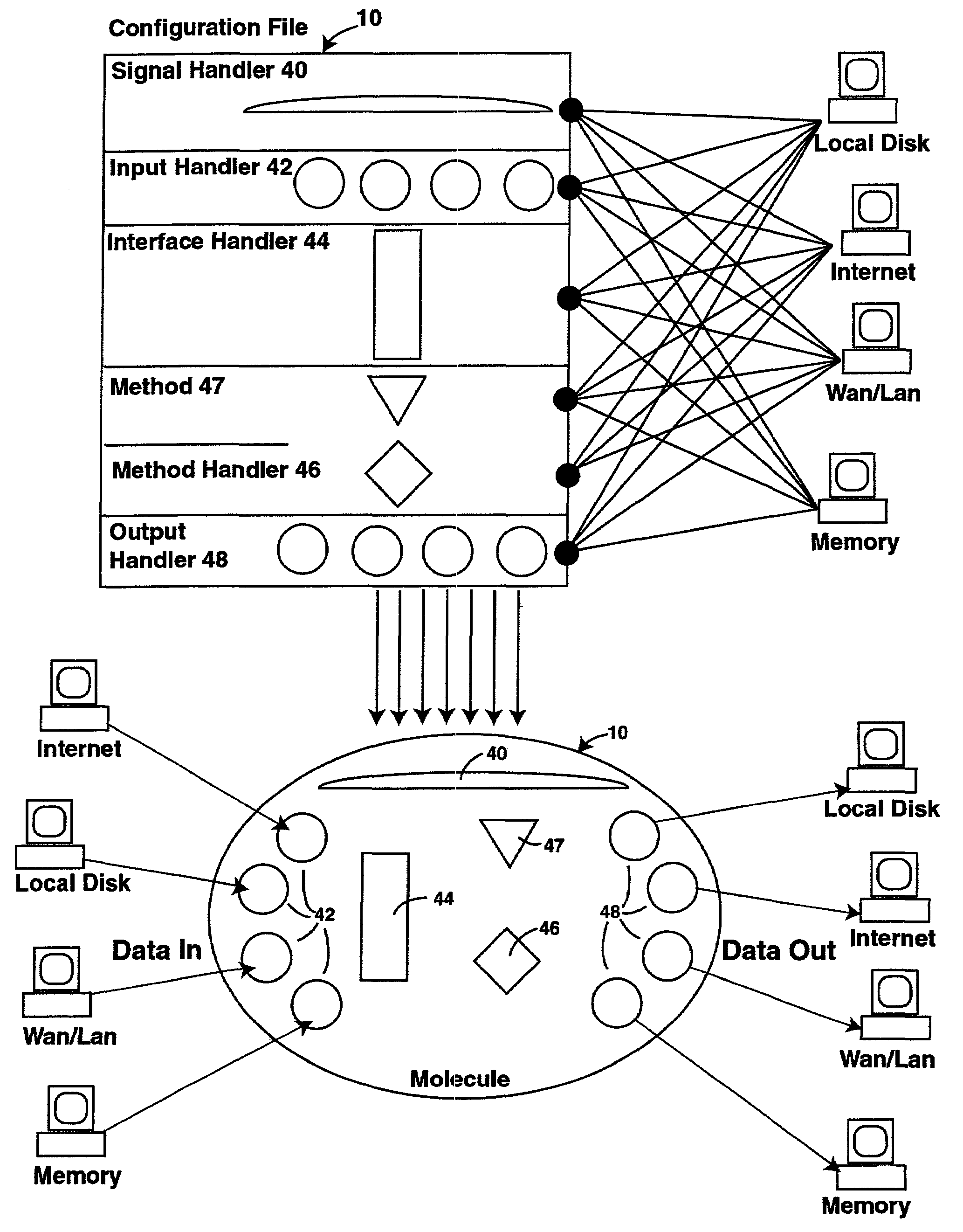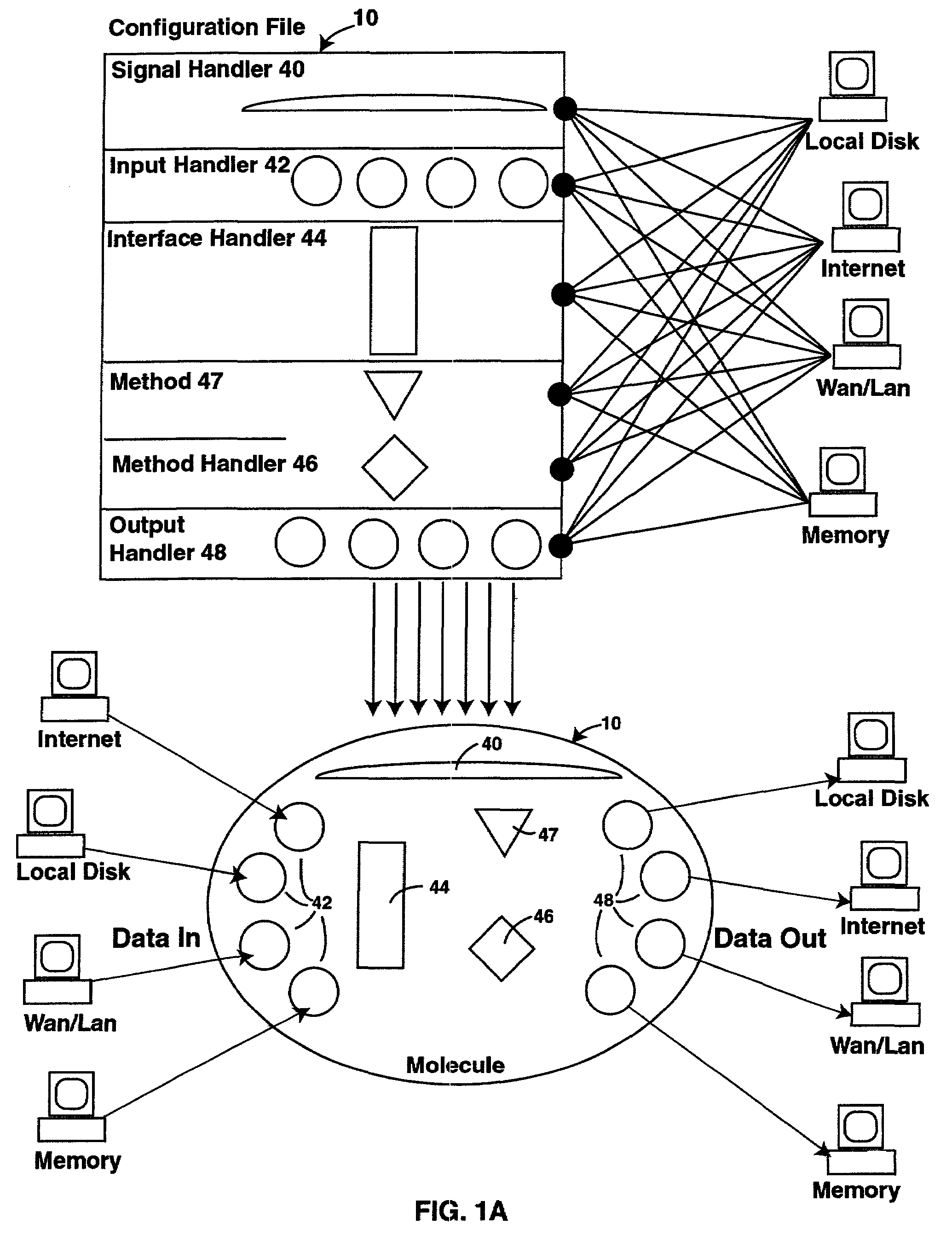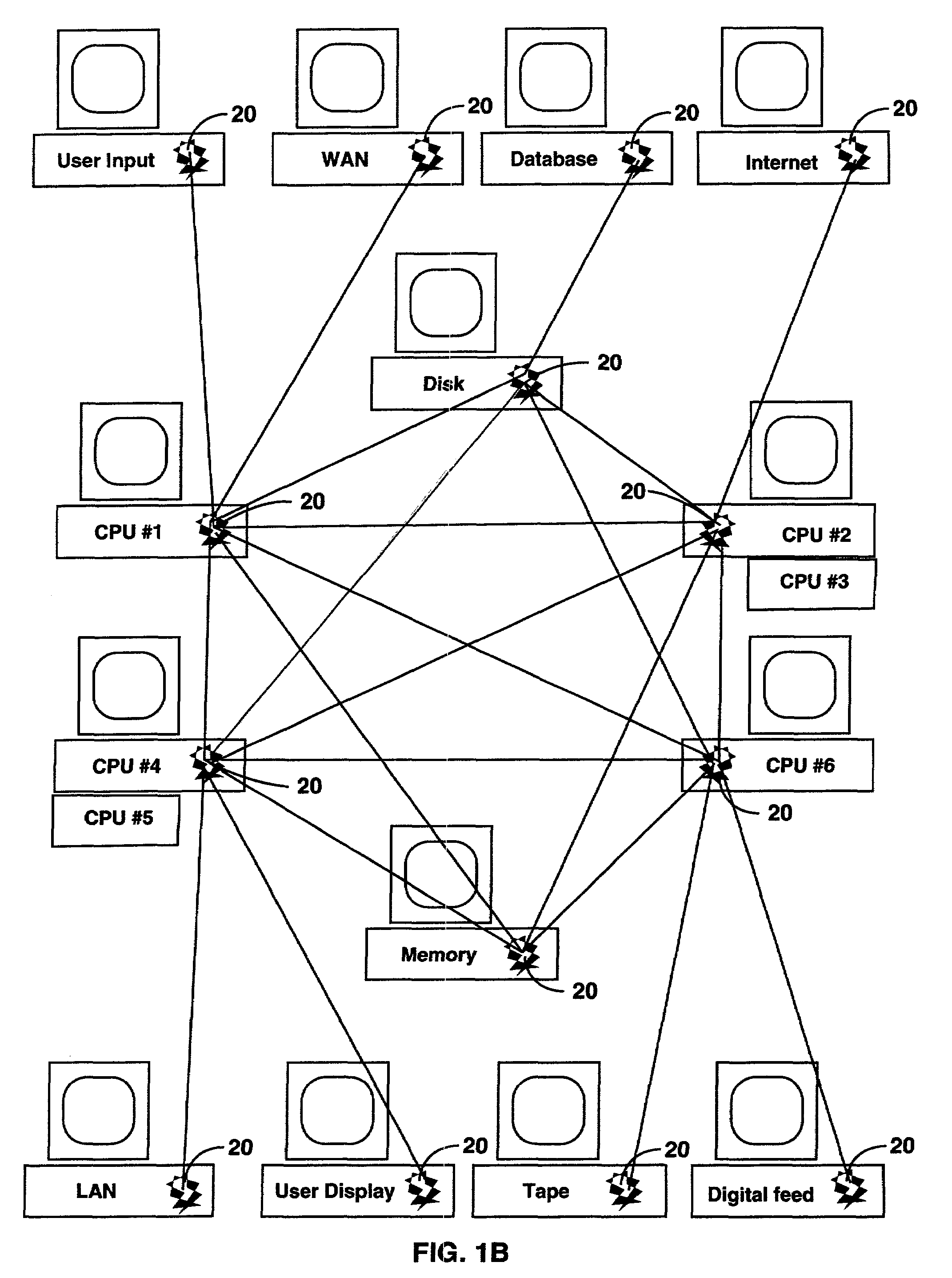Computer processing and programming method using autonomous data handlers
a technology applied in the field of computer processing and programming method, can solve the problems of legacy system obsolescence and legacy systems, code writing intensive for linear programming methods, and debugging efforts
- Summary
- Abstract
- Description
- Claims
- Application Information
AI Technical Summary
Benefits of technology
Problems solved by technology
Method used
Image
Examples
Embodiment Construction
[0024]In the present invention, a new computer processing and programming method calls for creating a plurality of software entities (“molecules”) which are programmed to process data autonomously in communication with other molecules and available computing resources. The molecules are created from a common set of software micro-components programmed in any programming languages to run in any operating system environments. They are configured in a logic web of molecules to perform a data processing task, which may be a component of an overall processing task. A logic web, or a web of logic webs, may reside in a single computer environment, but is particularly suited to be used in parallel processing and distributed processing environments.
[0025]Referring to FIG. 1A, a general illustration of a software entity (“molecule”) 10 in accordance with the invention is illustrated. Each software molecule 10 is basically composed of its configuration (data) files, signal handler 40, input ha...
PUM
 Login to View More
Login to View More Abstract
Description
Claims
Application Information
 Login to View More
Login to View More - R&D
- Intellectual Property
- Life Sciences
- Materials
- Tech Scout
- Unparalleled Data Quality
- Higher Quality Content
- 60% Fewer Hallucinations
Browse by: Latest US Patents, China's latest patents, Technical Efficacy Thesaurus, Application Domain, Technology Topic, Popular Technical Reports.
© 2025 PatSnap. All rights reserved.Legal|Privacy policy|Modern Slavery Act Transparency Statement|Sitemap|About US| Contact US: help@patsnap.com



